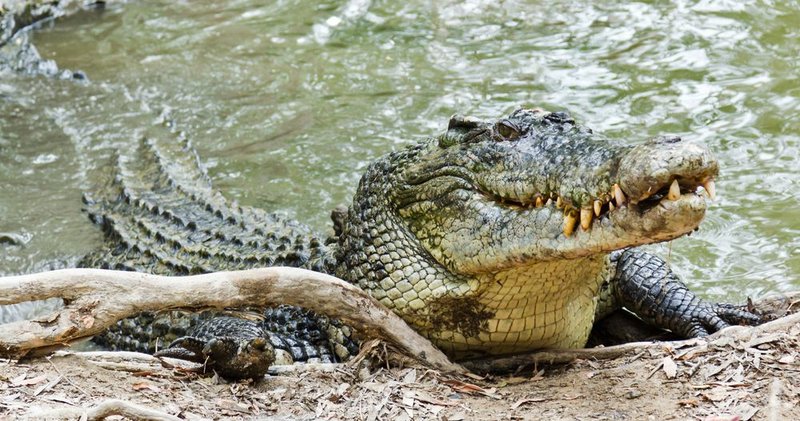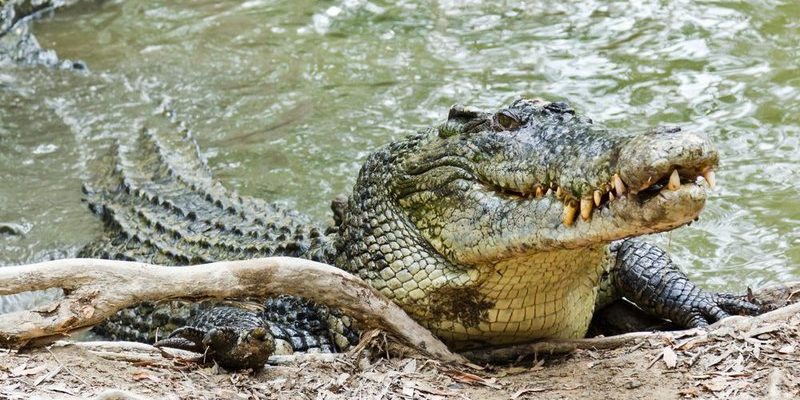
Picture this: you’re enjoying a tropical vacation by the beach, and you spot a large shadow moving beneath the surface of the water. It might look like a log, but as you get closer, you realize it’s a crocodile, and your heart skips a beat. Saltwater crocodiles can be found in various coastal regions, from Australia to Southeast Asia, and their behavior can seem pretty unpredictable. So, are they a real threat? The answer is a bit more complex than simply saying “yes” or “no.”
Let’s dive deeper into the fascinating world of saltwater crocodiles and explore why they can be dangerous to humans, what we can do to stay safe, and a few surprising facts about these incredible creatures.
Understanding Saltwater Crocodiles
Saltwater crocodiles, or *Crocodylus porosus*, are the largest living reptiles on Earth. They can reach lengths of up to 23 feet and weigh over 2,200 pounds! That’s like four or five adults standing on each other’s shoulders. They’ve adapted well to a range of environments, including rivers, estuaries, and even open ocean waters.
In terms of their behavior, saltwater crocodiles are opportunistic feeders. They often lie in wait for prey to approach, striking with incredible speed and strength. Here’s the thing: they don’t specifically seek out humans as food, but they will attack if they perceive a threat or if food is scarce. Their size and power make them potentially dangerous to anyone who accidentally ventures too close.
Habitat and Range
Saltwater crocodiles are found in various regions around the globe. You might find them in:
- Coastal areas of Southeast Asia
- Australian northern territories
- Islands of the South Pacific
They can tolerate saltwater and can migrate across oceans, which is quite incredible. This adaptability is part of why they’re so widespread and thriving in various environments.
How Often Do Attacks Happen?
While it’s true that saltwater crocodiles can be dangerous to humans, you might wonder just how often these attacks happen. According to various studies, there are around 1,000 reported crocodile attacks on humans each year globally, but not all result in fatalities. In Australia alone, an average of one person dies from a crocodile attack every year, which puts it into perspective.
It’s essential to recognize that many of these incidents occur when people inadvertently put themselves in dangerous situations, like swimming in areas where crocodiles are known to roam. The good news is that by being aware and cautious, you can significantly reduce your risk of encountering a crocodile in a harmful way.
The Role of Humans
Humans often encroach on crocodile habitats, whether for tourism, fishing, or simply enjoying a day at the beach. This overlap can lead to dangerous encounters. One notorious example is the practice of swimming in freshwater rivers and ponds known to harbor crocodiles. It might seem harmless, but it’s important to be aware of the local wildlife and heed warning signs.
Part of respecting these majestic creatures involves understanding their behavior. Saltwater crocodiles are highly territorial, and when they feel their space is invaded, they may respond aggressively. So, while they don’t actively hunt humans, they’ll defend their territory vigorously.
Advice for Staying Safe
So, how can you stay safe around saltwater crocodiles? Here are some essential tips to keep in mind:
- Be aware of warning signs: If you see signs indicating crocodiles in the area, take them seriously.
- Avoid swimming in murky waters: Crocs thrive in shallow lagoons where visibility is poor.
- Stay on designated paths: When hiking or exploring near water, stick to well-trodden trails.
- Keep your distance: If you see a crocodile, admire from afar! Never approach or provoke them.
By following these guidelines, you’ll minimize your chances of a dangerous encounter. Remember, these animals are part of a larger ecosystem, and it’s important to coexist peacefully.
What to Do If You Encounter One
If you ever find yourself face-to-face with a saltwater crocodile, it’s crucial to stay calm. Here’s what to do:
1. Back away slowly: Don’t turn your back or run. Sudden movements can trigger a chase response.
2. Avoid eye contact: Directly staring at a crocodile could be perceived as a threat.
3. Seek higher ground: If you’re near water, find a safe spot, like a rock or elevated bank.
This may sound like a lot, but understanding how to behave in these situations can go a long way in ensuring your safety.
Conservation and Respect
Saltwater crocodiles play a vital role in their ecosystems as apex predators. They help maintain the balance of species in their habitats, so it’s important to respect their place in nature. Conservation efforts are crucial to ensuring these creatures continue to thrive in the wild.
Unfortunately, habitat destruction and poaching have threatened their populations in some areas. By advocating for responsible tourism and supporting local conservation programs, you can contribute to the protection of saltwater crocodiles.
The Impact of Climate Change
Another factor to consider is climate change. Rising temperatures and changing water levels can significantly affect crocodile habitats. As their environments shift, their interactions with humans may become more complex. Awareness and proactive measures can help mitigate potential conflicts in the future.
Final Thoughts
In summary, while the saltwater crocodile can be dangerous to humans, understanding their behavior and habitats can help reduce the risks. These magnificent creatures deserve respect and protection, and by taking precautions, we can coexist peacefully. Next time you’re near the coast, think about the ancient majesty lurking beneath the waves, and remember: it’s all about being aware and staying safe.
You don’t have to fear these creatures, but a healthy respect for their power and nature is always a good idea. Enjoy the beauty of coastal waters, but keep those crocodile safety tips in mind!

